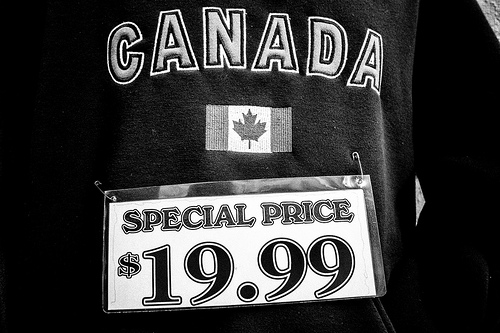Those who follow the business press closely, and listen attentively to corporate economic commentators, are still mainly in the dark about “who is actually getting what” in the business world.
Some very interesting information does turns up. A current New York Times series entitled “The United States of Subsidies,” covers business subsidies handed out by U.S. local governments. It cost $80 billion to attract and keep companies in local communities, the NYT estimated.
Once paid, the subsidies did not always do the trick. Companies took the money and shut down facilities anyway; much like what happened in London, Ontario, where Caterpillar took a cheque from Prime Minister Harper and then closed its Electro-Motive plant.
Ronald Coase, Nobel Prize winner in economics, thinks his profession provides a misleading picture of how the economy works. In fact he points out economists do not study the real economy at all. If they did, he reasons, economists would see that companies routinely turn to government for help.
Canadian governments traditionally assist not just Canadian companies, but foreign companies as well. In fact, foreign owners of the Canadian economy can count on every effort being made to ease their way.
Pertinently, the acquisition of Canadian assets by foreigners is financed by Canadian lenders. Canadian banks lend to the foreign corporations to buy Canadian assets. Governments made interest on the purchase tax deductible against Canadian future income. On a smaller scale, for new residents of Canada, all income from assets acquired in Canada is tax sheltered for five years.
The late Eric Kierans did a study of natural resources for the Manitoba government. He described Canadian policy as “roads to resources.” Canadians built the roads, foreign owners got the resources.
Normally, considerable financial wealth is generated by foreign corporations and their resource assets, manufacturing plants and equipment, and then remitted home.
Canadian oil, gas, mineral wealth, and manufactured products go to foreign owners, and big profits generated by this economic activity are also paid out abroad.
A smaller but significant amount of Canadian income earned abroad from financial services (big Canadian banks operate in the U.S.) and mining principally is taken by Canadian owners.
Interestingly, five of the main eight destinations for Canadians buying assets abroad are tax havens. Overall tax havens are estimated to contain US$10 trillion. That is real money gone missing.
The Conservative government was so concerned that corporations, foreign-owned and Canadian alike, pay as little tax here as possible, that our corporate tax rates are now lower than in the U.S. Despite this largesse, Canadian corporations still shuffle money offshore as Canadians for Tax Fairness pointed out in a letter to the premiers.
As more U.S. retailers such as Target move into Canada to take their place alongside Costco, Gap, Wal-Mart, and other chains, “made-in- Canada” products are not about to find a place on the shelves. The U.S. giants buy in Asia, sell in Canada, and report profits in tax havens, which shelter 60 per cent of world trade according to Education International.
Canada is headed for another large external deficit this year (it was $53.9 billion in 2011) in what is known technically as the current account of the balance of international payments. That is the difference between the amount Canadian corporations and individuals receive from outside the country, and the (greater) amount foreign corporations and individuals take out of Canada.
This Canadian deficit is paid for with money borrowed abroad. With U.S. interest rates virtually at zero, Americans in particular have a strong appetite for Canadian bonds. So Canada takes out loans to pay for what foreign owners take away from Canada. We pay interest on the money we borrow to pay for the wealth leaving Canada. Smart, eh.
In order to borrow abroad, interest rates in Canada need to be above U.S. rates. The inflow of foreign money to Canada has pushed up the value of the Canadian dollar to par with the U.S. dollar or higher. A stronger Canadian dollar makes imports more attractive, and makes overseas purchases of foreign assets more appealing. A slowing U.S. economy hurts Canadian exports.
According to the business press, the Canadian economy is now encountering “headwinds.” Roughly translated this means that with government austerity already cutting into economic prospects, business sitting on its money, consumers paying down debt, and a weak export market, Canadians can expect slower growth, poorer employment prospects, and stagnating incomes.
Corporations will be looking for new and more innovative forms of government assistance. Canadians should be demanding a new set of economic policies.
Duncan Cameron is the president of rabble.ca and writes a weekly column on politics and current affairs.
Photo: Joris Louwes/Flickr




